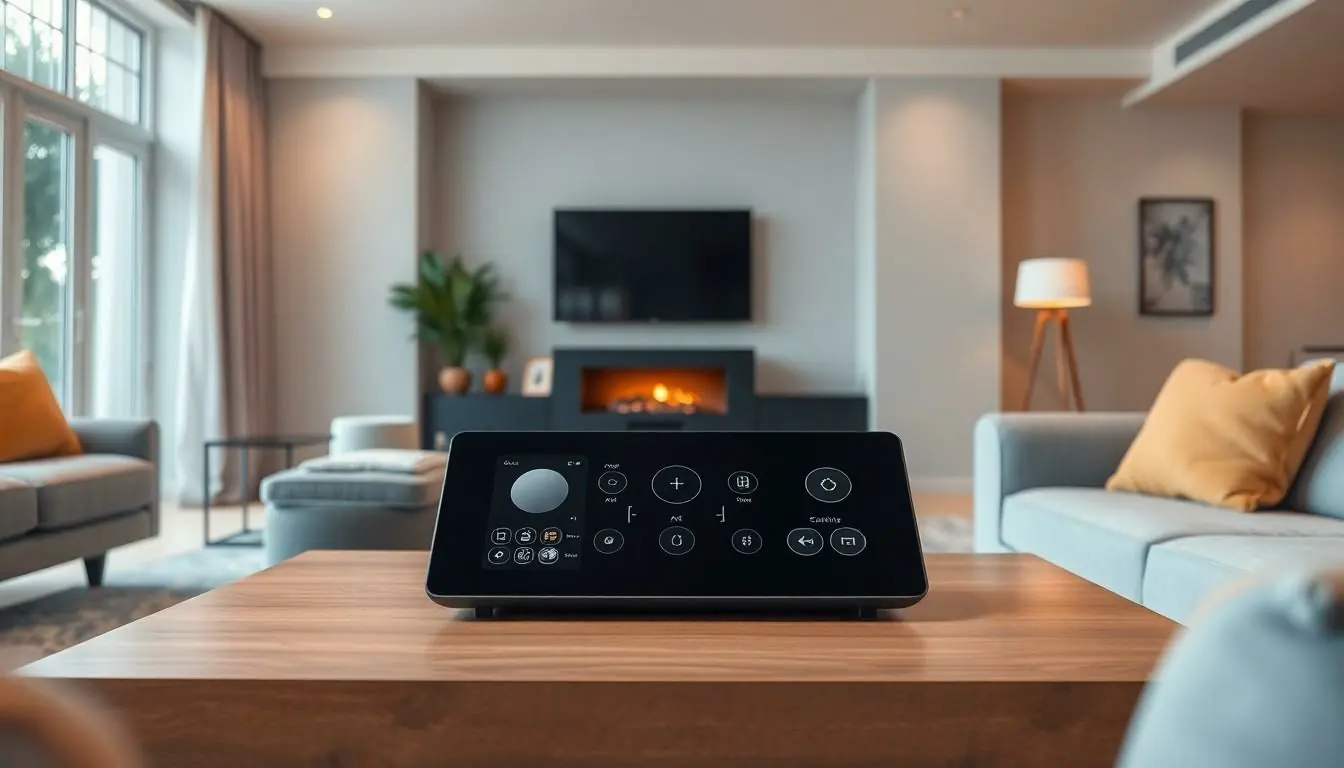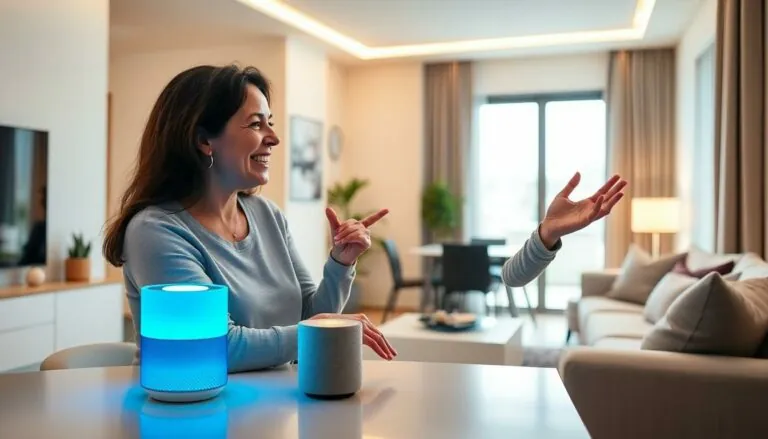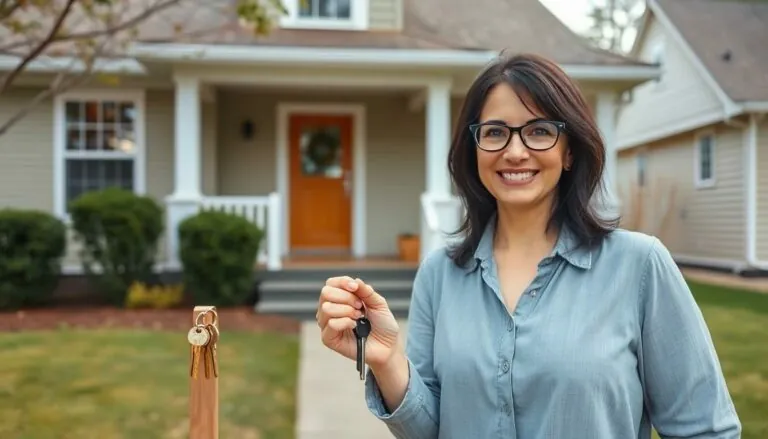Imagine walking into your home and having the lights turn on, the coffee brew, and your favorite playlist start playing—all without lifting a finger. Sounds like magic, right? Welcome to the world of home automation, where everyday tasks become effortless and your home transforms into a smart haven.
Table of Contents
ToggleOverview of Home Automation Projects
Home automation projects encompass a wide range of technologies and applications designed to enhance comfort and efficiency within the home. These projects typically involve integrating smart devices, which allow users to control various systems remotely. Smart lighting systems enable homeowners to adjust brightness levels and colors easily, creating the perfect ambiance for any occasion.
Thermostats play a crucial role in energy management, allowing users to monitor and modify heating and cooling settings from their smartphones. Remote control of appliances, such as coffee makers and ovens, provides convenience by allowing preparation of meals or beverages before arriving home. Security systems also benefit from home automation, featuring smart cameras and sensors that notify users of unusual activity.
Voice-activated assistants streamline control, allowing homeowners to manage multiple devices with simple commands. Smart blinds and shades can automatically adjust based on the time of day, improving energy efficiency by reducing the need for artificial lighting. Homeowners can also implement connected entertainment systems, enabling seamless streaming across multiple devices.
Integration between various devices enhances the overall home automation experience, creating a cohesive ecosystem. Many platforms support compatibility with numerous brands and devices, simplifying the installation process. DIY home automation projects attract many enthusiasts who enjoy customizing systems based on their preferences.
Cost factors vary significantly based on the complexity and scale of the project. Budget-friendly solutions enable homeowners to start small, gradually expanding their automation systems over time. Advanced setups, including full-home installations, offer more comprehensive control but involve a higher investment.
Benefits of Home Automation

Home automation enhances daily living through various benefits. Smart technology integrates seamlessly into routines, making life simpler and more efficient.
Increased Convenience
Convenience stands as a primary advantage of home automation. Smart devices allow users to control multiple functions remotely, saving time and effort. Automation schedules tasks, like brewing coffee or adjusting lights, at specific times. Users enjoy the ease of voice commands to manage systems, reducing the need for manual interactions. The convenience of accessing home systems via smartphone apps brings peace of mind, whether at home or away.
Enhanced Security
Enhanced security is a key benefit of implementing home automation. Smart security cameras and motion sensors provide real-time alerts, allowing homeowners to monitor their properties from anywhere. Integration with smart locks enables keyless entry, increasing safety without compromising accessibility. Automated lighting simulates occupancy, discouraging potential intruders. Additionally, home automation systems can automatically alert emergency services if a security breach occurs, enhancing overall safety.
Energy Efficiency
Energy efficiency significantly improves through home automation solutions. Smart thermostats optimize heating and cooling based on occupancy patterns, reducing energy waste. Automated lighting systems adjust according to natural light availability, minimizing electricity usage. Users can also track and manage their energy consumption through monitoring apps. Over time, these efficiencies lead to considerable savings on utility bills while contributing to environmental sustainability.
Popular Home Automation Projects
Home automation encompasses a variety of projects that enhance convenience and efficiency at home. Each project offers unique benefits, allowing users to customize their smart living environment.
Smart Lighting Systems
Smart lighting systems allow for control over brightness and color of lights through mobile apps or voice commands. Users can schedule lights to turn on or off based on specific times. This functionality saves energy and provides increased security by simulating occupancy. Systems frequently integrate with other smart home devices for seamless operation. Implementations can range from basic dimmers to advanced color-changing LED setups, catering to diverse preferences and budgets.
Home Security Automation
Home security automation significantly improves safety through the use of smart cameras and sensors. These systems provide instant alerts to users regarding any suspicious activities. Integration with mobile devices ensures real-time monitoring, even while away from home. Automated lighting can deter intruders, enhancing the overall security strategy. These solutions often include features like video doorbells and motion-triggered alerts, creating a comprehensive security framework for homeowners.
Smart Thermostats
Smart thermostats optimize energy consumption by learning user preferences and scheduling heating and cooling accordingly. These devices enhance comfort by maintaining consistent temperatures while also promoting energy efficiency. Remote control through smartphone apps enables users to adjust settings from anywhere. Savings on energy bills are common with the implementation of these systems, often leading to a return on investment within a few months. Many models support integration with other devices, creating a cohesive smart home experience.
Steps to Start Your Home Automation Project
Starting a home automation project involves careful planning and execution. Follow these steps to ensure success.
Assessing Your Needs
Identifying specific needs shapes the foundation of a home automation project. Start by evaluating daily routines. Determine which tasks require automation for efficiency. Consider areas like lighting, security, and climate control. Prioritizing functions improves convenience and comfort. Additionally, assessing compatibility with existing systems helps avoid integration issues. Document these requirements for reference during the planning phase.
Choosing the Right Devices
Selecting the appropriate devices ensures a streamlined automation experience. Research options for smart thermostats, lights, and security cameras. Compare features and functionalities to match identified needs. Prioritize energy-efficient devices that provide longevity and savings. Check for compatibility with existing home networks and protocols, like Wi-Fi or Zigbee, to promote seamless integration. Opt for reputable brands known for reliability and customer support. Evaluate users’ reviews and ratings to gain insight into device performance.
Installation Tips
Proper installation contributes to the effectiveness of home automation systems. Begin by reviewing installation guides for each device to understand specific requirements. Prepare necessary tools to facilitate the process. Organize wiring and network connections neatly to maintain aesthetics. Test devices individually during installation to ensure proper functionality before fully integrating them into the system. Follow safety guidelines, especially when working with electrical components. Taking these precautions enhances the overall efficiency of the home automation setup.
Challenges and Considerations
Home automation projects bring numerous benefits, but they also present several challenges and considerations that require attention.
Compatibility Issues
Devices may not always communicate seamlessly, leading to functionality setbacks. A user’s existing equipment could limit the choices available for new smart devices. Ensuring compatibility becomes essential; checking specifications for supported protocols like Zigbee or Z-Wave can prevent future headaches. Additionally, some manufacturers design ecosystems that don’t integrate well with others, creating potential silos in the home automation setup. Research into each device’s compatibility with current technology can streamline the process, ensuring a cohesive smart home experience.
Cost Considerations
Budgeting for home automation projects involves evaluating both initial and ongoing expenses. Costs can vary significantly based on the choice of devices and their installation requirements. A straightforward project might only need a few affordable smart bulbs, while a comprehensive system could entail professional installation for multiple devices and complex configurations. Users should also factor in potential subscription fees for cloud services associated with specific devices. Planning for long-term benefits like energy savings can help justify initial investments, ultimately leading to a more efficient and connected living space.
Home automation projects offer a transformative way to enhance everyday living. By integrating smart devices into daily routines, individuals can enjoy increased convenience, security, and energy efficiency. Whether starting small with smart lighting or diving into comprehensive systems, the possibilities are endless.
Planning and research are key to successful implementation. By assessing needs and ensuring device compatibility, anyone can create a personalized smart home environment. Embracing these technologies not only simplifies life but also promotes sustainability and cost savings over time. As home automation continues to evolve, the journey toward a smarter home becomes an exciting adventure for all.





